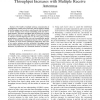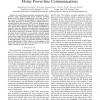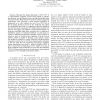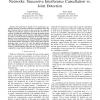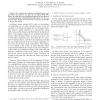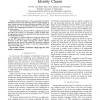ICC
2009
IEEE
14 years 6 months ago
2009
IEEE
Abstract—The DNS is a cornerstone of the Internet. Unfortunately, no matter how securely an organization provisions and guards its own DNS infrastructure, it is at the mercy of o...
ICC
2009
IEEE
14 years 6 months ago
2009
IEEE
—The two-way relay channel (TWRC) describes the communication between two terminals sharing a common relay. In this work we compare different protocols for the TWRC with a half-d...
ICC
2009
IEEE
14 years 6 months ago
2009
IEEE
— The benefit of multiple antenna communication is investigated in wireless ad hoc networks, and the primary finding is that throughput can be made to scale linearly with the n...
ICC
2009
IEEE
14 years 6 months ago
2009
IEEE
—In typical home power-line communication (PLC) networks using contention-based access methods, providing Quality-of-service (QoS) to high-priority users often comes at the expen...
ICC
2009
IEEE
14 years 6 months ago
2009
IEEE
—Following the design philosophy of XCP, VCP is a router-assisted congestion protocol that intends to balance the efficiency and the fairness control in high Bandwidth-Delay Pro...
ICC
2009
IEEE
14 years 6 months ago
2009
IEEE
—A variety of wireless network technologies have been developed and deployed, including GSM, UMTS, WiFi and WiMAX. The advantages of having an integrated heterogeneous wireless n...
ICC
2009
IEEE
14 years 6 months ago
2009
IEEE
Abstract—The performance benefits of two interference cancellation methods, successive interference cancellation (SIC) and joint detection (JD), in wireless ad hoc networks are ...
ICC
2009
IEEE
14 years 6 months ago
2009
IEEE
Abstract—We consider non-asymmetric distributed source coding (DSC) that achieves any point in the Slepian-Wolf (SW) region. We study the error propagation phenomena and propose ...
ICC
2009
IEEE
14 years 6 months ago
2009
IEEE
—Identity federation is a key requirement for today’s distributed services. This technology allows managed sharing of users’ identity information between identity providers (...
ICC
2009
IEEE
14 years 6 months ago
2009
IEEE
—A new variation of the Flow-Aware Networking (FAN) concept is presented in the paper. The proposed solution is based on the Approximate Fair Dropping algorithm and called by us ...

